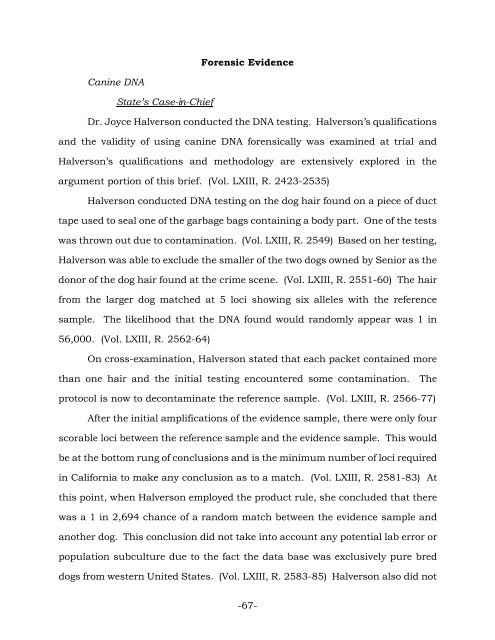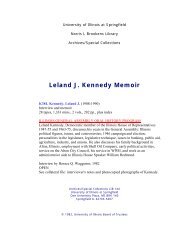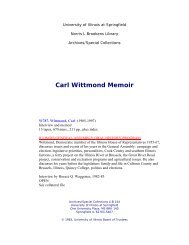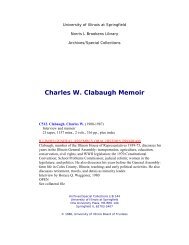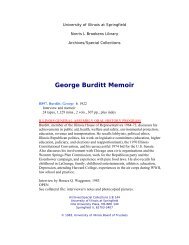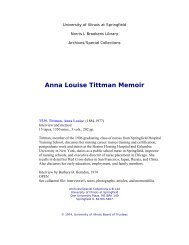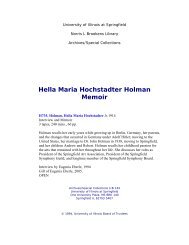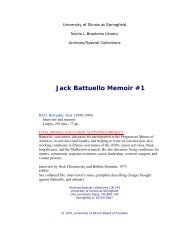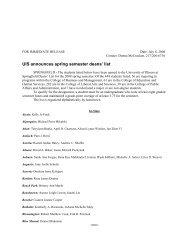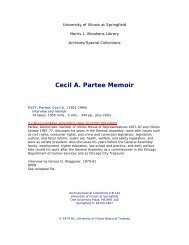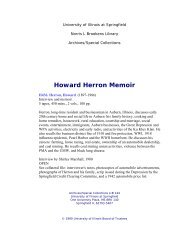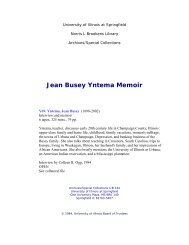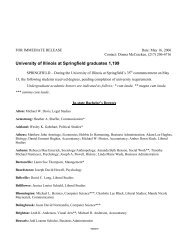STATEMENT OF FACTS - University of Illinois Springfield
STATEMENT OF FACTS - University of Illinois Springfield
STATEMENT OF FACTS - University of Illinois Springfield
Create successful ePaper yourself
Turn your PDF publications into a flip-book with our unique Google optimized e-Paper software.
Canine DNA<br />
State’s Case-in-Chief<br />
Forensic Evidence<br />
Dr. Joyce Halverson conducted the DNA testing. Halverson’s qualifications<br />
and the validity <strong>of</strong> using canine DNA forensically was examined at trial and<br />
Halverson’s qualifications and methodology are extensively explored in the<br />
argument portion <strong>of</strong> this brief. (Vol. LXIII, R. 2423-2535)<br />
Halverson conducted DNA testing on the dog hair found on a piece <strong>of</strong> duct<br />
tape used to seal one <strong>of</strong> the garbage bags containing a body part. One <strong>of</strong> the tests<br />
was thrown out due to contamination. (Vol. LXIII, R. 2549) Based on her testing,<br />
Halverson was able to exclude the smaller <strong>of</strong> the two dogs owned by Senior as the<br />
donor <strong>of</strong> the dog hair found at the crime scene. (Vol. LXIII, R. 2551-60) The hair<br />
from the larger dog matched at 5 loci showing six alleles with the reference<br />
sample. The likelihood that the DNA found would randomly appear was 1 in<br />
56,000. (Vol. LXIII, R. 2562-64)<br />
On cross-examination, Halverson stated that each packet contained more<br />
than one hair and the initial testing encountered some contamination. The<br />
protocol is now to decontaminate the reference sample. (Vol. LXIII, R. 2566-77)<br />
After the initial amplifications <strong>of</strong> the evidence sample, there were only four<br />
scorable loci between the reference sample and the evidence sample. This would<br />
be at the bottom rung <strong>of</strong> conclusions and is the minimum number <strong>of</strong> loci required<br />
in California to make any conclusion as to a match. (Vol. LXIII, R. 2581-83) At<br />
this point, when Halverson employed the product rule, she concluded that there<br />
was a 1 in 2,694 chance <strong>of</strong> a random match between the evidence sample and<br />
another dog. This conclusion did not take into account any potential lab error or<br />
population subculture due to the fact the data base was exclusively pure bred<br />
dogs from western United States. (Vol. LXIII, R. 2583-85) Halverson also did not<br />
-67-


